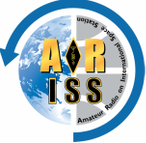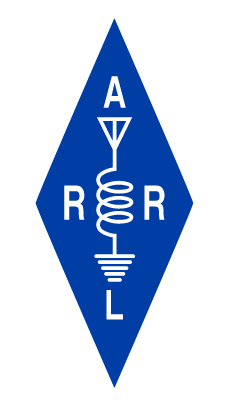 New England Division Director Fred Kemmerer, AB1OC, writes:
New England Division Director Fred Kemmerer, AB1OC, writes:
“It’s been my pleasure to work with the Sussex County Charter School for Technology (SCCST), as their ARISS Mentor, to prepare for their contact. The school has partnered with the Sussex County Amateur Radio Club to build a ground station which they will use to make their contact. Club members have also worked closely with the school to provide many Amateur Radio activities for SCCST students. The school has formed an Amateur Radio club at the school and conducted Amateur Radio activities as part of an outstanding STEM learning program. Working with a school such as SCCST is a great way for a local amateur radio club to build a strong, ongoing relationship with a group of young people interested in Amateur Radio.”
The downlink from the astronaut may be heard in New England on 145.800 MHz. The livestream will start at 9:50 AM and the ISS pass will start at 10:31 AM.
—
ARISS News Release No. 22-11
Dave Jordan, AA4KN
ARISS PR
aa4kn@amsat.org
FOR IMMEDIATE RELEASE
ARISS Contact is Scheduled for Students at Sussex County Charter School for Technology, Sparta, NJ, USA
February 21, 2022—Amateur Radio on the International Space Station (ARISS) has received schedule confirmation for an ARISS radio contact with astronauts. ARISS is the group that puts together special amateur radio contacts between students around the globe and crew members with ham radio licenses on the International Space Station (ISS).
This will be a direct contact via amateur radio between students at the Sussex County Charter School for Technology, Sparta, New Jersey and Astronaut Mark Vande Hei, amateur radio call sign KG5GNP. Students will take turns asking their questions. Local Covid-19 protocols are adhered to as applicable for each ARISS contact. The downlink frequency for this contact is 145.800 MHz and may be heard by listeners that are within the ISS-footprint that also encompasses the radio relay ground station.
Amateur radio operators, using the call sign KD2YAQ, will operate the ham radio ground station for this contact.
The ARISS radio contact is scheduled for February 23, 2022 at 10:31 am EST (New Jersey), (15:31 UTC, 9:31 am CST, 8:31 am MST and 7:31 am PST).
Sussex Charter School for Technology (SCCST) is a STEM-focused, rural middle school in Sparta, NJ, serving 225 students. In preparation for this ARISS contact, through hands-on activities and class instruction, students worked with the local HAM radio club, high school, and university Physics departments to learn more about radio communications and solar influence on such communications. Members of the Sussex County Amateur Radio Club are supplying the direct contact equipment and will be conducting the ISS radio contact. New Jersey Institute of Technology (NJIT) has partnered with the school to introduce modules on space weather, solar cycles and ionospheric phenomena into their curriculum. Faculty members of NJIT’s amateur radio club, K2MFF, are founding members of HamSCI, and will lead the NJIT-SCCST collaboration and assist in the ARISS event and follow-up activities. Sussex County Technical School is their neighboring vocational/technical high school, and will provide filming and streaming capabilities.
The public is invited to watch the live stream at: https://youtu.be/dQpyK-uyzPU
As time allows, students will ask these questions:
- Do you have any telescopes on the ISS and, if so, how far can they see?
- In the event of space debris, asteroids, or solar flares collisions, what are the safety protocols or systems to ensure the astronaut’s/cosmonaut’s safety in situations like that?
- How do you exercise on the space station if there’s no gravity?
- What science experiments are you working on that will have an impact on the future?
- How do you feel about private space companies trying to make space travel open to civilians?
- What is the best space food you’ve eaten, and do you notice any improvement in the quality of the food since the Deep Space food challenge started?
- How often do you need to communicate with the Earth (Mission control)?
- What would you do if the communication with Mission Control broke down and you couldn’t communicate with Earth?
- Being that you see 16 sunrises and sunsets in each day, how do you regulate your sleep schedule?
- What steps are taken on the ISS to shield you from the pathway of the Sun’s radiation?
- How do astronauts control the robotic arm on the outside of the space station? Do you use a computer program or use a joystick like on a game controller?
- Who put the first pieces of the International Space Station together and will any of it be reused after the mission ends?
- How do astronauts maintain good hygiene on the ISS if there are no showers?
- What happens if an astronaut gets a serious virus or other illness while they are on the ISS?
- What is your least favorite chore or dangerous task that you do in space?
- What are the legal parameters followed in regards to the fly zones? If something should go wrong, while over a country other than the U.S., what fly zone rules are followed for legal purposes?
- How did your parents react when you arrived at the space station or when you left them?
- Considering the limited amount of your own items you can bring along with you from Earth, can you share with us one of the items you brought?
- What are the negative physical impacts on your body of being in space and does it go back to normal when you’re back on Earth?
- Would you let your own young kids, nieces, or nephews go to space if young people were given an opportunity to do so?
- If you could change one thing about space travel what would that be?
About ARISS:
Amateur Radio on the International Space Station (ARISS) is a cooperative venture of international amateur radio societies and the space agencies that support the International Space Station (ISS). In the United States, sponsors are the Radio Amateur Satellite Corporation (AMSAT), the American Radio Relay League (ARRL), the ISS National Lab-Space Station Explorers, Amateur Radio Digital Communications (ARDC) and NASA’s Space communications and Navigation program. The primary goal of ARISS is to promote exploration of science, technology, engineering, the arts, and mathematics topics. ARISS does this by organizing scheduled contacts via amateur radio between crew members aboard the ISS and students. Before and during these radio contacts, students, educators, parents, and communities take part in hands-on learning activities tied to space, space technologies, and amateur radio. For more information, see www.ariss.org.
